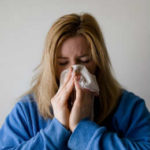Seasonal Affective Disorder
If you suffer from Seasonal Affective Disorder, commonly known as winter depression or SAD, you’re not alone. Ira Riklis has learned that the condition is fairly common. According to familydoctor.org, roughly four to six percent of the United States population suffers from SAD. Another 10 to 20 percent suffer from the condition in a milder form. Women are more likely to be affected than men. Symptoms usually show up in late fall or early winter. Although much less common, some people suffer from depressive symptoms during the warmer months.
Symptoms Of SAD
In order to recognize and treat SAD, you must know the symptoms. Some of the symptoms associated with this condition are:
- Low energy
- Weight gain
- Craving for carbohydrates
- Social withdrawal (feeling like hibernating)
- General feeling of sadness
Symptoms associated with the less common summer seasonal affective disorder include:
- Poor appetite and weight loss
- Inability to sleep
- Agitation
- Restlessness and anxiety
- Violent behavior (in severe cases)
Risk Factors For Developing SAD
There are many factors associated with Seasonal Affective Disorder. Being aware of the risk factors can help you mitigate the impact of this condition. You can prepare yourself ahead of time so that you can know what to do when the seasons begin to change so that you can avoid the sadness and depression brought about this condition. Some risk factors to look out for are:
- Being female – Women are more likely to suffer from SAD than men
- Living far from the equator – People who live far north or far south are more likely to develop SAD
- Heredity – Depression can be inherited, so if depression runs in the family, SAD is more likely to develop and less likely to develop in those individuals where depression is absent from family history
- Being bipolar or suffering from major depression – The symptoms of depression may worsen when the seasons change if you suffer from one of these conditions.
- Being young – Symptoms of SAD have been reported to be more common in younger adults than in older adults. Teenagers and young children can also suffer from SAD.
Coping With SAD
Getting through the changing seasons when dealing with SAD is much easier if you have a way of coping with your depression and feelings of sadness. The following tips can get you on your way to feeling better no matter the season.
- Expose yourself to sunlight in the mornings. Winter blues can affect you the most when it’s time to wake up. Beat the blues and open your blinds first thing in the morning to let in natural light to help wake you up.
- Stick with your routine. Don’t withdraw from your favorite activities just because winter cuts down your daylight hours. Staying active will leave less time for feelings of depression to set in.
- Don’t forget to exercise. Stay active to relieve stress and feel better about yourself. Use exercise as a natural way to release endorphins which will make you feel happy and euphoric. Exercise will also help you rest properly.
- Cut the sugar. The winter months can make you crave carbs and sugar which leads to weight gain and a general decline in health. Scientists believe sugar inhibits the body’s ability to cope with stress and can worsen anxiety.
- Spend a little time outside each day. There’s nothing like fresh air to lift your spirits. Brave the cold and bundle up, even if it’s just for five minutes a day. It will refresh you and make you feel better mentally and physically.
If you have Seasonal Affective Disorder, don’t feel like you’re alone. It’s common. Knowing what the risk factors are and how to cope with the condition are the keys to successfully beating the blues when the seasons change.







